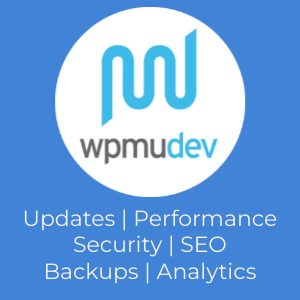Businesses are constantly seeking strategies to drive success, whether it’s investing in innovation, securing funding for inventory, or automating time-consuming tasks. Although these strategies are vital, there is one aspect that often goes overlooked, but plays a crucial role in connecting with customers: search engine optimization (SEO).
A high ranking on Google is like having a prime storefront location on the world's busiest street. It directs massive organic traffic to your website, placing you right in front of potential customers actively searching for what you offer. But for many website owners, the complexities of Google's ranking algorithm remain a frustrating mystery.

Photo Credit: Unsplash
Demystifying the Google Algorithm
While Google's ranking algorithm is a closely guarded secret, we do know it prioritizes a few core principles:
Relevance
Google strives to match search queries with the most relevant content that addresses the user's intent. This means your website content needs to be informative, well-written, and directly related to the keywords users are searching for.
Authority
Google considers your website's authority and expertise on a particular topic. Factors like backlinks from reputable sources and high-quality content can help establish your website as a trusted source of information.
User Experience (UX)
Google wants people to think well about your website. For you, this means avoiding common web design mistakes and focusing on factors like:
- Mobile-friendliness
- Fast loading speeds
- A clear and intuitive website layout
Mastering On-Page SEO
On-page SEO refers to the optimization techniques you apply directly to your website content and structure. Consider the following tactics to improve on-page SEO on your end:
Keyword Research
Identify relevant keywords that users are actively searching for. Helping you with this process are a plethora of paid and free keyword research programs. Popular options include:
- Google Keyword Planner
- SEMrush
- Ahrefs
Keyword research allows you to understand the search terms and phrases your target audience is using and helps you tailor your content to their needs. By incorporating these keywords throughout your website content, in a natural and non-spammy way, you increase the chances of your website appearing in search results when users enter those keywords.
Content Optimization
Write excellent, educational material that focuses on the keywords you have selected. But remember, SEO isn't just about stuffing keywords into your content.
Focus on providing value to your audience by answering their questions, solving their problems, and establishing yourself as an authority in your field.
Content should be well-written, informative, and engaging. Consider different content formats like blog posts, infographics, videos, and case studies to cater to different user preferences and learning styles.
Title Tags and Meta Descriptions
Craft compelling title tags and meta descriptions for your web pages. These snippets appear in search results and play a crucial role in enticing users to click on your website.
Ensure they accurately reflect your content and include relevant keywords. Title tags should be concise, informative, and around 60 characters long, while meta descriptions should be around 160 characters and include a call to action.
Internal Linking
Structure your website navigation with relevant internal links. This helps search engines crawl and understand your website content more efficiently, and also improves user flow by allowing visitors to easily navigate to related pages.
When implementing internal linking, prioritize linking to high-quality, relevant content within your website. This demonstrates the topical hierarchy of your website to search engines and distributes link equity among your pages.
Image Optimization
Write alt-text descriptions and picture file names with relevant search terms. This helps search engines understand what your images are about and can improve image search visibility.
Additionally, optimize image sizes to ensure fast loading speeds. Large image files can slow down your website, harming your SEO performance and user experience.
Building Off-Page SEO Authority
Off-page SEO focuses on building your website's authority and credibility in the eyes of search engines. Let’s take a look at some effective techniques to boost off-page SEO:
Backlink Building
Backlinks are links from other sites that point to your website. Acquiring high-quality backlinks doesn't just improve your SEO rankings—it can also equate to more traffic and conversions.
Social Media Engagement
Promote your website content on social media platforms to increase brand awareness and drive potential traffic back to your website. Social engagement can also indirectly impact SEO by sending positive signals to search engines.
Online Reputation Management
Promote great internet reviews and quickly respond to unfavorable ones. User reviews can influence search engine algorithms and ultimately impact your rankings.
Tracking Your SEO Efforts
SEO is an ongoing process. To measure your progress and track the effectiveness of your efforts, utilize analytics tools like Google Search Console. These tools provide valuable insights into website traffic, user behavior, and keyword rankings.
Here are some key metrics to track in Google Search Console and other analytics tools:
- Organic Traffic: Monitor the amount of traffic your website receives from organic search results. An increase in organic traffic indicates that your SEO efforts are paying off.
- Keyword Rankings: Track your website's ranking for your target keywords. Aim to improve your ranking for relevant keywords over time.
- Click-Through Rate (CTR): This metric measures the percentage of users who click on your website link after seeing it in search results. A high CTR indicates that your title tags and meta descriptions are compelling and enticing users to click.
- Bounce Rate: The proportion of visitors to your website that depart after reading only one page—that’s your bounce rate. A high bounce rate might indicate that your content is irrelevant to the user's search intent or that your website navigation is confusing.
Final Thoughts
Consistent effort and a data-driven approach are key to achieving lasting success. By implementing these essential SEO elements, you'll be well on your way to climbing the Google rankings ladder. Don't be afraid to experiment, track your progress, and stay updated on the latest SEO best practices as search engine algorithms evolve.

About the Author: Sophia Young
Sophia recently quit a non-writing job to finally be able to tell stories and paint the world through her words. She loves talking about fashion and weddings and travel, but she can also easily kick ass with a thousand-word article about the latest marketing and business trends, finance-related topics, and can probably even whip up a nice heart-warming article about family life. She can totally go from fashion guru to your friendly neighborhood cat lady with mean budgeting skills and home tips real quick.



